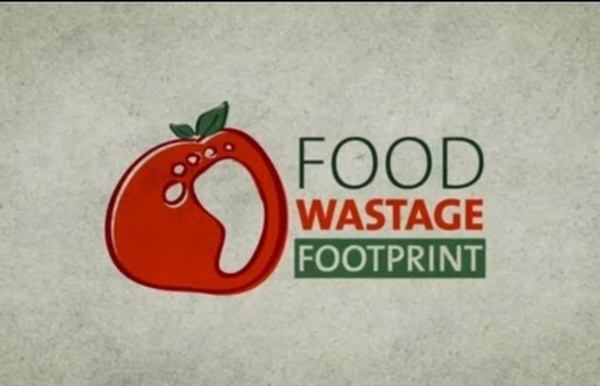



http://www.youtube.com/watch?v=IoCVrkcaH6Q
Related: Reducing food waste • FOOD WASTEGardeners Sharing Their Harvest With A Community Food Pantry Pour une agriculture paysanne au sud et au nord. Artisans du Monde Parcours numérique : pour une agriculture paysanne au sud et au nord. Réfléchir aux liens entre l'agriculture paysanne au sud et au nord au travers du commerce équitable. L'occasion de reposer les constats du modèle agricole et de voir comment commerce équitable nord-sud et commerce équitable local nord-nord entrent en résonance et non pas en compétition pour promouvoir un mode de production respectueux des Hommes et de la Planète partout ! 10 étapes pour : illustrer le soutien du commerce équitable aux paysans du sud mais aussi aux paysans du nord,comprendre notre action au travers de la vente des produits mais aussi des luttes menées en communs pour l'agroécologie et les droits des paysans,découvrir les projets de soutien à la relocalisation au nord mais aussi au sud,faire tomber des idées reçues sur les filières nord sud, etc.
Waste not want not: Food projects in the UK Do you ever throw away food at home? Have you ever thought about what happens to the food that shops and supermarkets don’t sell? Well, you might be shocked to find out that approximately one third of food produced for human consumption gets lost or wasted. What’s more, around 800 million people in the world do not have enough food to lead a healthy life. Many people in the UK and across the world are trying to do something about this imbalance and make use of thrown-out food that is perfectly edible. Also, last year the UK’s first food waste supermarket opened. 'Fuel for School' is another food waste project. Some people in the UK practise 'skipping', which means going to bins and skips and finding food in there to eat. I have always been very conscious of the amount of food we waste, and I very rarely throw food away. More cafés like this are being opened in other parts of the UK such as Bristol and Manchester, and it is now becoming a worldwide phenomenon.
Food Wastage Around the World [Infographic] - Arbtech We’re all guilty of wasting a bit of food now and again, whether that’s through cooking too much or not eating something before the best before date. However, it’s a much bigger problem than that, and globally there is around 1-1.2 billion tonnes of food wasted every year. Just imagine what could be done with all that wasted food. And it’s not just the wasted food itself that’s a problem. This infographic looks at all these points, showing how much of a global issue food wastage is, as well as how we can do our bit at home to reduce the amount of food that goes to waste. We hope that you find this infographic interesting. Did you realise how big an issue food wastage is? Sources FAO. 2011. Transcript Food wastage around the world From farms, to supermarkets to forks – a massive proportion of food produced around the world goes uneaten.
We must take back control of our food, before it's too late | Matthew Herbert We are living through a delicious disaster. Never has so much food been offered to us from so many parts of the world, and in such elaborate combinations. The average supermarket carries over 45,000 different product lines, and yet the provenance of most of these products are utterly opaque. The government has handed control of the food chain over to the supermarkets – and with it, any meaningful sense of the common good. Take fish. The government tells shops to hide cigarettes behind the tills, but allows them to set up mazes of crisps, chocolate and sweets that we are forced to walk through to get to the till. Responsibility is constantly deferred downwards to us as though the food system is a benign force simply there to offer us choice and let us get on with it. To add insult to injury, according to Tristram Stuart's book Waste, UK households waste 25% of all food they buy.
Compost Guy | Turning Wastes Into Resources My That's English!: Food waste In this week's reading test we are going to practise the multiple choice reading comprehension type of task. To do so, we are goint to use The Guardian's article The ridiculous story of airline food and why so much ends up in landfill. Read the text and choose the option A, B or C which best completes each sentence. The ridiculous story of airline food and why so much ends up in landfill You probably know about the waste problem in our oceans. 1. 2. 3. 4. 5. 6. 7. 8.
Food waste being recycled with “stomach” machine in Dubai | Uae Dubai: The Dubai Central Lab is promoting eco-friendly recycling of food waste by using a machine that can “digest food like the human stomach” and turn it into grey water. Officials told Gulf News that a liquid food composter (LFC) manufactured by a private company works like the stomach and uses certain enzymes and bacteria to recycle food waste with a little bit of water in a process similar to digestion and turns it into grey water. The machine does not produce any foul smell of the waste and helps in reducing CO2 emission, officials said. Maha Suwekeet Al Hajri, food and environment laboratory section manager, said the lab under Dubai Municipality opted for using the machine LFC after successfully completing a six-month trial period facilitated by the company Power Knot. In those six months, the machine recycled more than 3,000kg of food waste and reduced nearly 13 tonnes of carbon footprint. Al Hajri said the lab receives 200-300 food samples daily and about 4,000 samples per month.
Over-consumption, climate change threaten food security, water supply: FAO